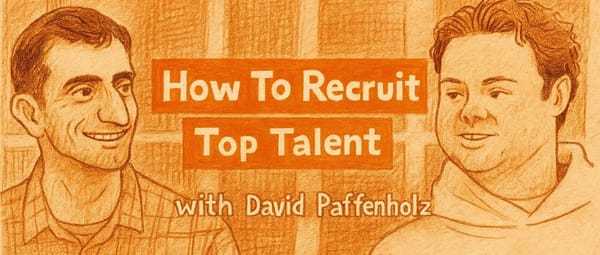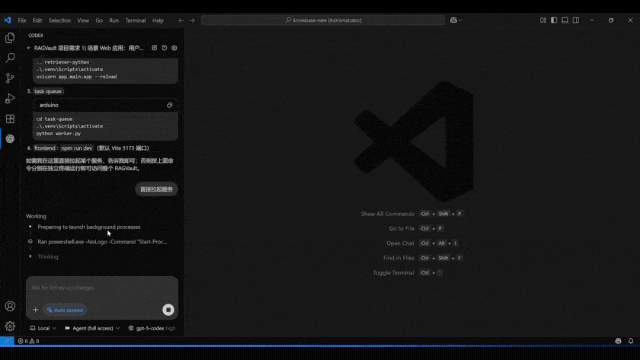
# The Future of AI Hardware — Beyond "Adding AI" to Existing Devices
AI hardware is **undeniably the future**, but it’s *not* simply about slapping AI onto the devices we already have.
---
## Key Questions for the AI Era
- **How will hardware, interaction, and ecosystems evolve?**
- **How will input/output (I/O) be organized effectively?**
- **What might a new hardware OS for the AI age look like?**
- **Will smartphones remain the main personal computing device?**
These are strategic questions **every entrepreneur and investor** should consider before picking a hardware track.
---
## Founder’s Vision
From **Dong Hongguang**, founder of **LightSail Technology**:
> **"Wearable devices might be the first step in the revolution of AI interaction... In the future, it will inevitably be multi-device linkage, all coordinated by a single AI brain."**
---
## Background — Dong Hongguang
- **Early Career**: IBM
- **Xiaomi Founding Team** (Employee #89)
- **Achievements**:
- Led **MIUI** system R&D
- Built the **Quick App ecosystem**
- Initiated self-developed **Phone OS** & **Automotive OS**
- **Unique Expertise**: Creating a general-purpose OS from scratch, building dev ecosystems, releasing commercial products
- **LightSail Technology**:
- Founded **Oct 2024**
- **RMB 130M funding** in 3 months
- Among fastest-growing AI startups in China
---
## 01 — AI Will Reshape Consumer Electronics
### Dong’s Journey
- Graduated → IBM → Joined Xiaomi in 2010
- Developed system apps: themes, messaging, recorder, “minus one” home screen
- Led MIUI framework, middleware, Quick App ecosystem
- Pioneered:
- **Themes** (first in smartphones)
- **Install-free apps** (pre-dating WeChat Mini Programs)
- Multi-vendor Quick App ecosystem with Huawei, OPPO, Vivo
### Lessons Learned
- **Trend Sensitivity**: Spotting industry shifts early
- **Tech Equity**: Technology should benefit many, *not* stay elite
- Product-making methodology (*Lei Jun’s Seven-Character Formula*): **Focus, Extreme, Reputation, Fast**
---
> **Related**: Platforms like [AiToEarn](https://aitoearn.ai/) empower creators to use AI for **content generation, publishing, and monetization** across Douyin, Kwai, WeChat, YouTube, etc. AI-powered ecosystems will become increasingly important in bridging innovative tech with revenue models.
---
## 02 — AI-era Interaction: "Demand-based" + "Multi-modal"
### Past Interaction Milestones
1. **Command Line → Mainframes**
2. **GUI (Keyboard + Mouse) → Xerox → Apple Lisa**
3. **Touch Interaction → iPhone revolution**
- Portable general-purpose computing
- Required new OS paradigms (**Android**, **iOS**)
### Now: From "Instruction-based" to **"Demand-based"**
- **Instruction-based**: Precise clicks, typed commands
- **Demand-based AI**: Users express needs; AI interprets and executes
- **Multi-modal**:
- Language
- Voice
- Vision
- Context sensing
**Key Insight**: Future devices won’t be optimized for tapping — they’ll excel at **understanding needs** and communicating naturally.
---
### Why Wearables are First Step
Wearable advantages:
- **Always-on**
- Proactive sensing
- Ideal for speech and vision input
- Closer fit to continuous AI interaction needs
---
## 03 — The Smartphone Era is Nearing Its End
### Apple’s Lesson
- **Core Competence**: Mastery of human–machine interaction, early adoption
- **Multi-device Collaboration**: Phone, PC, watch, headset
- Trend: Machines adapting to humans, **AI orchestration** across devices
### Emerging Limitations of Phones
- **Not always-on**
- **In-pocket latency**
- Cloud-based “brains” reduce local computational importance
- Device roles will shift to **strength-specialization**
---
**Prediction**:
Phones → Large-screen nodes in **multi-device collaborative networks**, orchestrated by a **cloud-based AI central brain**.
---
## 04 — Why We’re Starting With Headphones (Not Glasses)
### Headspace Interaction Devices
- Richest entry points: **Voice** and **Vision**
- Glasses: promising long-term but heavy, habit barriers
- **Headphones Advantage**: Re-define familiar product form, add sensors → richer AI context
### Sensor Philosophy
- Adding sensors ≠ gimmick
- New inputs enable **natural, intuitive interaction**
- Example: Camera for **recognition & perception**
- Like GPS → enabled LBS, O2O
- Camera → offline need recognition → online services
---
## 05 — Active AI Needs Context + Data
### Prerequisites for Genuine Proactivity
1. **Rich user data** (preferences, schedule, location)
2. **Sensors** for context awareness
3. **AI personality** to build trust
Wearables are great for:
- **24/7 presence**
- Meeting needs **hands/eyes-free**
- Habit-building via proactive assistance
---
## 06 — General-purpose Hardware > Specialized Hardware
### Why General-purpose Wins
- Covers high-frequency needs
- Avoids “dust-collecting” niche devices
- Economies of use: fixed wearing cost, amplified perceived value
---
## 07 — AI-era Operating Systems
**Challenges**:
- Multi-sensor, multi-modal data fusion
- Cross-device orchestration
- Privacy-first design
**Opportunities**:
- No incumbent OS optimized for demand-based + multi-modal AI interaction
- Small players can win if they identify optimal **hardware + software paradigm**
### Future Ecosystem
- **Apps** fade → AI “Agents” coordinate services
- Cloud-based AI “brains” + edge devices
- Unified OS ⇒ reduces dev cost, enables rich cross-device user experiences
---
## Conclusion
The operating system of the AI age will:
- Be **multi-modal** and **context-aware**
- Span multiple devices, unified by a **cloud AI brain**
- Dissolve the smartphone’s monopoly as the computing center
- Enable distributed hardware innovation
Ecosystem logic — hardware, interaction, AI orchestration — will define winners. Those who create a **developer-friendly OS paradigm** have a real chance, regardless of company size.
---
> **Explore further**: [AiToEarn官网](https://aitoearn.ai/) | [AiToEarn博客](https://blog.aitoearn.ai) | [开源地址](https://github.com/yikart/AiToEarn) | [AI模型排名](https://rank.aitoearn.ai) — Open-source, cross-platform AI content monetization platform, showing how unified frameworks can accelerate adoption in the AI era.
---




